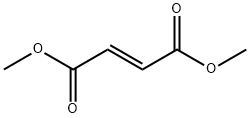2,6-Dimethyl-4-heptanone , 99% , 108-83-8
Synonym(s):
Cognac heptanone;Diisobutyl ketone;Di-iso-butyl ketone, 2,6-Dimethyl-4-heptanone, Isobutyl ketone;Isovalerone
CAS NO.:108-83-8
Empirical Formula: C9H18O
Molecular Weight: 142.24
MDL number: MFCD00008940
EINECS: 203-620-1
PRODUCT Properties
| Melting point: | -46 °C |
| Boiling point: | 165-170 °C(lit.) |
| Density | 0.808 g/mL at 25 °C(lit.) |
| vapor density | 4.9 (vs air) |
| vapor pressure | 1.7 mm Hg ( 20 °C) |
| FEMA | 3537 | 2,6-DIMETHYL-4-HEPTANONE |
| refractive index | n |
| Flash point: | 120 °F |
| storage temp. | Store below +30°C. |
| solubility | Miscible with ethanol, ether, carbon tetrachloride, chloroform, benzene and most organic liquids. |
| form | Liquid |
| Specific Gravity | 0.810 (20/4℃) |
| color | Clear colorless to slightly yellow |
| Odor | Sweet Pineapple-Banana-like fruity taste, but with a somewhat harsh chemical note. |
| Odor Type | green |
| biological source | synthetic |
| explosive limit | 0.8-6.2%, 100°F |
| Water Solubility | 0.05 g/100 mL |
| JECFA Number | 302 |
| BRN | 1743163 |
| Henry's Law Constant | 6.36(x 10-4 atm?m3/mol) at 20 °C (approximate - calculated from water solubility and vapor pressure) |
| Exposure limits | TLV-TWA 150 mg/m3 (25 ppm); IDLH
1000 ppm. |
| Dielectric constant | 9.9100000000000001 |
| Stability: | Stable. Flammable. Incompatible with strong oxidizing agents. |
| LogP | 3.71 at 20℃ |
| CAS DataBase Reference | 108-83-8(CAS DataBase Reference) |
| NIST Chemistry Reference | 4-Heptanone, 2,6-dimethyl-(108-83-8) |
| EPA Substance Registry System | Diisobutyl ketone (108-83-8) |
Description and Uses
2, 6-Dimethyl-4-heptanone, also known as diisobutyl ketone, belongs to the family of ketones, being a flavoring ingredient. It can also be used as the extraction solvent for the determination of ten trace metals (V, Cr, Fe, Co, Ni, Cu, Zn, Mo, Cd, Pb) in aqueous samples with plasma atomic emission spectrometry. Similar logic can also be applied to the measurement of phosphorus using 2, 6-dimethyl-4-heptanone as the extraction agent. It is also an important organic solvent widely used as industrial intermediates.
Diisobutyl ketone is used as a solvent fornitrocellulose, lacquers, and synthetic resins;in organic syntheses.
Safety
| Symbol(GHS) |   GHS02,GHS07 |
| Signal word | Warning |
| Hazard statements | H226-H335 |
| Precautionary statements | P210-P233-P240-P241-P242-P243 |
| Hazard Codes | Xi |
| Risk Statements | 10-37 |
| Safety Statements | 24 |
| OEB | A |
| OEL | TWA: 25 ppm (150 mg/m3) |
| RIDADR | UN 1157 3/PG 3 |
| WGK Germany | 1 |
| RTECS | MJ5775000 |
| Autoignition Temperature | 745 °F |
| TSCA | Yes |
| HazardClass | 3 |
| PackingGroup | III |
| HS Code | 29141990 |
| Hazardous Substances Data | 108-83-8(Hazardous Substances Data) |
| Toxicity | LD50 orally in Rabbit: 5750 mg/kg LD50 dermal Rabbit 16000 mg/kg |
| IDLA | 500 ppm |




